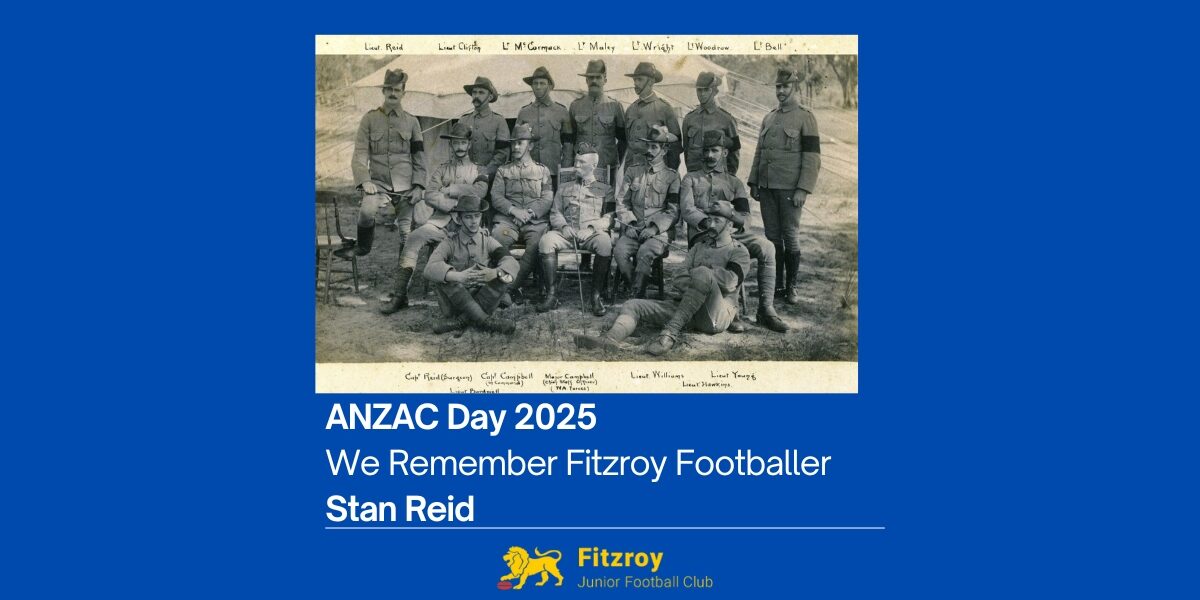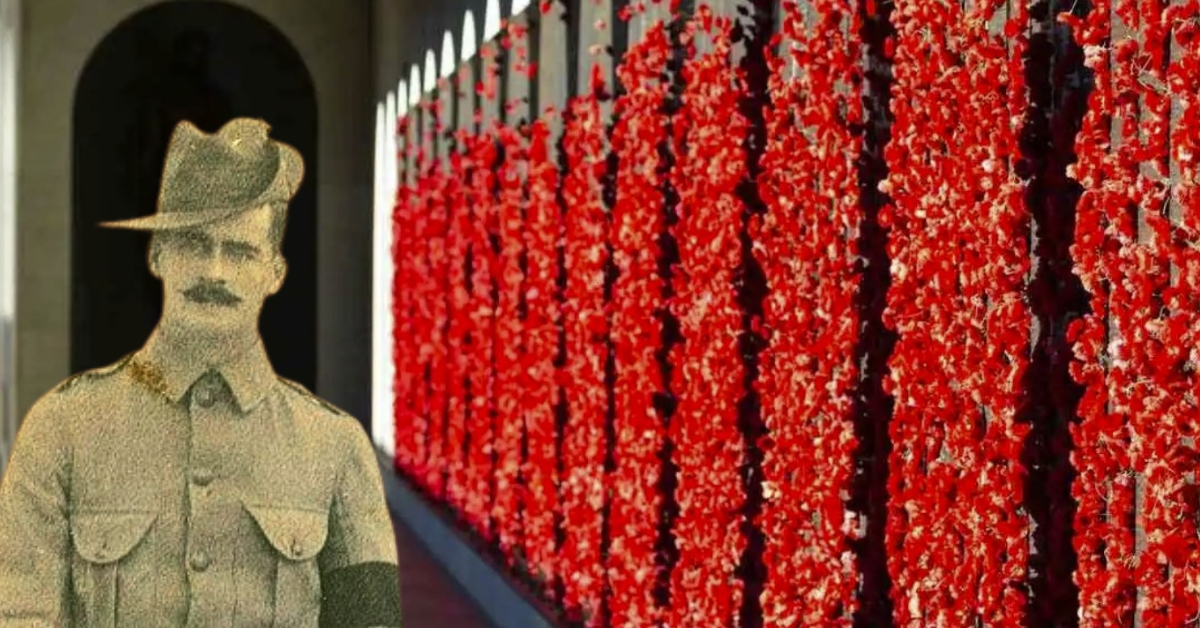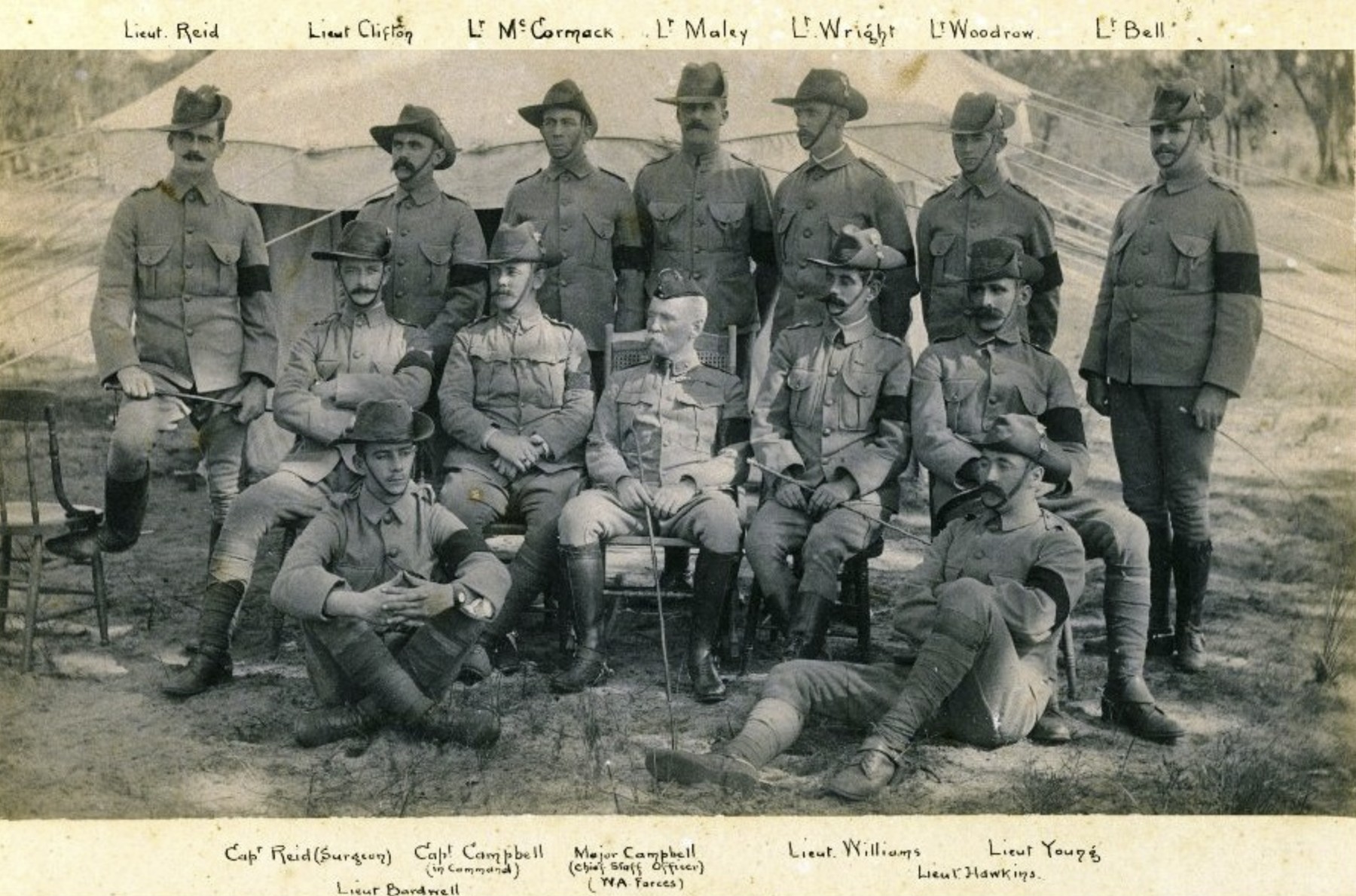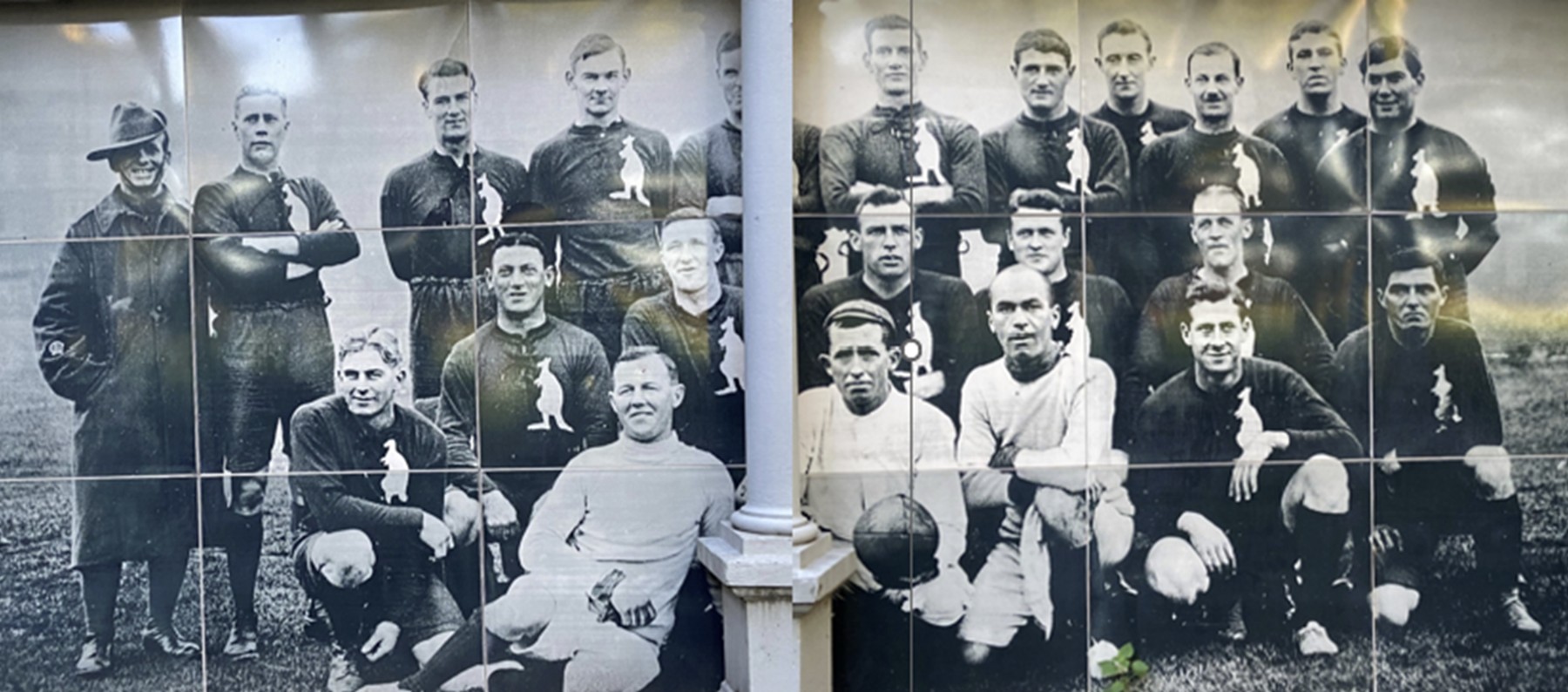
FJFC Anzac Day 2025
April 23, 2025
FJFC Anzac Day
Fitzroy Junior Football Club recognizes the importance of Anzac Day.
On Anzac Day, we pay tribute to former diggers and, in particular former Fitzroy player Stan Reid, whose service reflects the courage and sacrifice of our forebears.

We are also sharing some interesting informaton related to Anzac Day traditions and their enduring significance.
What is the meaning of Anzac Day?
‘Anzac ’ stands for Australian and New Zealand Army Corps. The actual day is commemorated on 25th April and is a National Day of Mourning for Australians and New Zealanders who became victims of war. It’s also a day of recognition of the service, so many gave in our armed forces.
History
On 25th April 1915, Australian and New Zealand troops landed at Gallipoli in Turkey. This landing marked the first major military action by the Australian and New Zealand forces in WW1. It also marked the first time Australians fought as their own nation since Federation in 1901. Federation marked the date that British Parliament passed legislation for Australia’s six colonies to collectively govern as ‘The Commonwealth’.
Dawn Service
In 1914, a civilian padre Reverend White started this tradition in Albany, Western Australia. He conducted a service at 4am for the Battalion that was about to embark onto Gallipoli. The population of Albany climbed to the peak of Mt Clarence and said their Farwell’s the convoy as it sailed away.
A Minute’s Silence
On Anzac Day, we take a minute of silence, to remember the service and sacrifice of those who have died in wars and armed conflicts.
Silence is a way to show respect for the fallen and to give participants a moment to reflect on the sacrifices made by those who have served.
What is ‘The Ode ‘
Many of us hear this poem on Anzac Day.
‘They shall not grow old, as we that are left grow old
Age shall not weary them, nor the years condemn.
At the going down of the sun and in the morning
we will remember them.’
The Ode is the fourth stanza from a poem called ‘The Fallen’ composed by English Poet & writer, Mr. Laurence Binyon.
It was first published in a book of Poems of the Great War in 1914 and wasn’t used in Australia in our Anzac services till 1921.
The Last Post
If you have ever attended a Dawn Service, they will ask you to turn and face the west, and you will hear the haunting sound of the bugle call.
It is one of a number of bugle calls in military tradition that mark the phases of the day.
While the bugle call ‘Reveille’ signals the start of a soldier’s day, the Last Post signals its end.
When you listen to the 2 bugle calls at a Dawn Service on Anzac Day, you will now know that the bugle calls have certain meanings:
The First Bugle: is the final farewell and symbolises the duty of those who have since past and can now rest in peace.
The Second Bugle: This follows the two minutes of silence and is called the Reveille (or The Rouse) and means ‘the start of the soldiers’ day.
This weekend, we stop and remember the sacrifice of our Fitzroy forebears in wartime.
We Remember Fitzroy Player Stan Reid

(Stan Reid standing in the back row on the left)
Stan Reid had a special story about football, family, faith and fantastic service to our country.
Stan Reid was a member of the first Fitzroy premiership side in 1898. He was 26 and was considered one of the best defenders in the then VFL. He was a standout in a 15-point win over Essendon at Junction Oval. In a career which had begun in the old VFA in 1894, he was described as “a strong, high mark with a long kick”.
After the establishment of a breakaway competition in 1897 that became the VFL he played in the League’s first draw, Fitzroy’s fourth game, and Fitzroy’s first win.
The 1898 grand final, the first in the game’s history, was his 24th game. And his last. Less than three years later, still only 26 and a church minister turned solider, he was killed in the Anglo Boer War in South Africa. He is believed to be the second VFL player to die while on active service.
The son of Reverend John Reid, who had sailed to Australia from England on the ‘Hampshire’ in 1891, Stan Reid was born in Swan Hill after his family had become the first Presbyterian minister in the area. He joined Fitzroy in the VFA in 1894 and in bizarre circumstances the likes of which underline the remarkable nature of football history, he played in the first combined VFL side to play in Melbourne.
According to football folklore, a team known as the “Metropolitans” were to play at the MCG on 12 June 1897 against a combined team from the Ballarat League. Then considered the second-best competition and labelled the “Country” team. For some trivial reasons relating to the free admission of VFL delegates to the Members’ Reserve, the MCG refused to allow the VFL to use its pavilion facilities and the VFL transferred the match to Brunswick Street Oval.
Reid had not originally been selected in the side, which contained players from Melbourne, Essendon, South Melbourne, Fitzroy, Geelong, Carlton and St Kilda, but for unexplained reasons six members of the side failed to show up. The start of the match was delayed as organizers hurried to find last minute replacements, including the Fitzroy foursome of Tom Banks, Bill Cleary, Bill McSpeerin and Reid.
Reid played eight games with Fitzroy in the first season of the VFL in 1897 and 16 including the grand final in 1898 before opting to follow his family to Western Australia. On 20 October 1898 the Fitzroy City Press reported on a farewell presentation to the star defender by Mr. T Banks, representing the club, of a pair of field glasses. The club was sorry to lose Mr Reid and extended their best wishes for his future welfare as he departed for Western Australia.
The story went on to report that Mr Reid gave a heartfelt speech in response, expressing his deep love for the game. Though he was now entering the clergy, he said he would always maintain an interest in the sport and continue to care deeply about Fitzroy’s welfare.
Reid later joined the Imperial Forces during the Anglo-Boer War, initially serving as a trooper in the Second Western Australian Mounted Infantry Contingent (2WAMI) in 1900, after his offer to serve as a volunteer chaplain was declined due to a lack of vacancies in that role.
He initially enlisted as a private and was later commissioned as an officer in the Sixth Western Australian Mounted Infantry Contingent (6WAMI) in 1901. Departing for his second overseas engagement on 10 April 1901—accompanied by his younger brother, Surgeon-Captain Francis Bentley Reid, who served as a medical officer in the same unit—he saw action in the Eastern Transvaal, where he was severely wounded on 16 May.
Treated by his brother, he recovered and returned to active duty. However, on 23 June 1901, during a reconnaissance mission at Renshoogte Farm near Ermelo, Reid was again shot in the stomach and died three days later. He was laid to rest with full military honours in a grave specially arranged by the men he had commanded—beneath a clump of Australian wattles, marked with a large wooden cross bearing his name. The ceremony was attended by his commanding officer and staff, along with representatives from the regiments of the Sixth Western Australian Mounted Infantry
In 1902, Mr. Collick, a close friend and the regimental chaplain, praised Reid, stating that “though Stanley Reid went to South Africa as a soldier he lived up to the high standard of life that he would have had to live as a minister, and in every way, he set a good example to his men”.
Stan Reid is one of thousands of fallen soldiers remembered each year on Anzac Day.
On Anzac Day, we remember those before us, and especially the Fitzroy players, like Stan Reid who went to war, and paid the ultimate sacrifice.
Lest We Forget.

In Anzac 2024, we remembered Fitzroy Club Captain Jack Cooper
